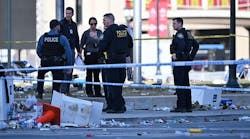The time to think about preparing an emergency plan is not in the middle of a crisis – a gunman on site, a natural disaster or one of many other possibilities. A good municipal facility or school security director should have a plan to help minimize injury, loss of life and property damage.
To start your plan, create a task force with people from all departments. Choose leaders and assign tasks during the first meeting. Also, be sure to get full contact information for each group member.
Then try to anticipate any and all emergencies that might occur. Walk around your facility and look for vulnerabilities. Talk to security and law enforcement professionals to gain their expertise. And don’t forget to talk to your employees and vendors.
Those same employees also can be a tremendous resource during a crisis as they can lead evacuations, power down vital equipment, lock doors and help with many other tasks.
After completing the initial assessment, it’s time to draft a plan and then practice it for different scenarios. Evaluate how well it worked and make adjustments. Then practice it again before writing a final draft.
Get to know your first responders – law enforcement, fire fighters and paramedics. Let the officials know how many people there are in your facility, the location of any disabled persons and let them know of any toxic materials or other potential dangers on site. If you have blueprints available, share those as well. And then practice your plan at least twice a year, making sure that new hires are aware of their roles.
You may have to evacuate during an emergency, so choose a place to go (i.e. a church, mall or school) and remember that weather could be a factor.
Up-to-date information is critical during an emergency. Mass notification systems help by simultaneously sending detailed messages to cell phones, PDAs, pagers and personal computers. Outdoor emergency communication systems provide warnings that can be clearly heard up to one-quarter mile away.
Also, consider including security cameras that act as extra pairs of eyes, giving your emergency team a better idea of what is happening during an emergency. Also, if you run your video over a network, law enforcement personnel can view your cameras from their emergency command center or on laptops in their vehicles.
The main ingredients to a plan are prevention, preparedness, response and recovery. Minimizing injury and property damage in an emergency situation is all about careful, meticulous planning – and a lot of practice. No plan can guarantee perfect results. But by not fully planning for a crisis, you are courting disaster.
-- Patrick Fiel is the public safety advisor for ADT Security Services.




